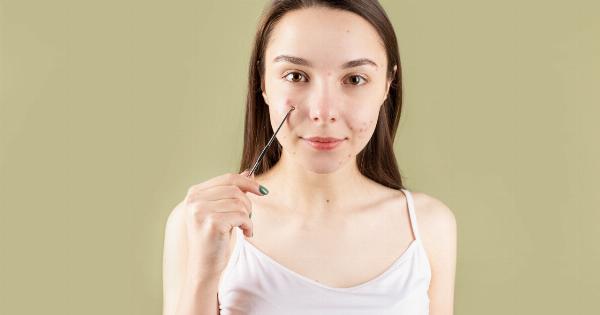Baldness is a common condition that affects millions of people worldwide. It can be caused by a variety of factors, including genetics, hormones, medications, and medical conditions.
If you’re dealing with baldness, it’s important to understand the underlying causes and explore available treatment options to help manage the symptoms and regain your confidence.
Causes of Baldness
There are several factors that can contribute to baldness, depending on the individual’s genetics and lifestyle. Here are the most commonly known causes of baldness:.
Genetics
Family history plays a significant role in determining whether someone will experience hair loss or baldness.
If one or more of your close relatives (like your father, grandfather, or uncle) experienced baldness, you may be at higher risk for this condition. Molecular genetics research suggests that baldness is caused primarily by an inherited susceptibility to hair loss. However, the exact genes that are responsible for this trait have not yet been identified.
In some cases, people may experience baldness later in life even if there’s no family history of it.
Hormones
Hormones play a crucial role in the growth cycle of hair follicles. Imbalances of specific hormones, such as dihydrotestosterone (DHT), can cause hair follicles to shrink over time, resulting in thinner and shorter hair growth.
This can lead to eventual baldness. Hormonal changes during puberty, menopause and pregnancy, as well as fluctuations in thyroid hormones can also contribute to hair loss.
Medications
Some medications can cause hair loss as a side effect. Chemotherapy drugs, blood thinners, antidepressants, and anticonvulsants are among the drugs that may affect hair growth. Some drugs used to treat acne and infections can also cause hair loss.
If you’re taking any prescription medication and are experiencing hair loss, it’s important to speak to a medical professional to determine the cause and explore alternatives if possible.
Medical conditions
Various medical conditions can contribute to baldness, including autoimmune diseases, thyroid disorders, and infections. Scalp conditions such as psoriasis and seborrheic dermatitis can also cause hair loss.
In some cases, hair loss may be a symptom of an underlying health condition that requires medical attention.
Treatment Options for Baldness
There are several treatment options available to manage baldness and hair loss, including topical treatments, oral medications, surgeries, and lifestyle changes. Here are some commonly used treatment options:.
Topical Treatments
Topical treatments include various solutions, shampoos, and foams that can be applied directly to the scalp to help stimulate hair growth and minimize hair loss.
Some over-the-counter treatments contain minoxidil, a medication that dilates blood vessels in the scalp and increases blood flow to the hair follicles. It can take several months of consistent use to see any visible results. Prescription topical treatments containing DHT inhibitors can also be prescribed by a medical professional.
Oral Medications
Oral medications may be prescribed by a doctor to help slow down hair loss and promote hair growth. Finasteride is a medication that works by blocking the production of DHT, the hormone that can cause hair follicles to shrink.
It’s taken daily and may require at least six months before signs of improvement can be seen. Another medication, dutasteride, can also be used to block DHT production.
Surgery
Surgical procedures can be used to treat baldness, like hair transplants. Hair transplant surgery involves removing hair follicles from areas of the scalp with healthy hair growth and transferring them to areas where hair is thin or non-existent.
The procedure can take several hours and may require multiple sessions to achieve desired results. While surgery can be effective, it’s important to consult a qualified and experienced surgeon for the best possible outcome.
Lifestyle changes
In some cases, making lifestyle changes can help improve the condition of hair loss and baldness. Eating a balanced diet rich in nutrients essential for hair growth, reducing stress levels and getting sufficient sleep can promote healthy hair growth.
Avoiding tight hairstyles or pulling hair back into tight ponytails or braids can also put less stress on the hair and reduce hair breakage. Quitting smoking and reducing alcohol consumption may also have a positive impact on hair growth.
Conclusion
Baldness can have a significant impact on an individual’s self-esteem and confidence.
While there’s no one-size-fits-all solution for baldness, understanding the underlying causes and exploring available treatment options can help manage the symptoms and improve the condition. Whether it’s through topical treatments, oral medications, surgeries, or lifestyle changes, there are various ways to promote healthy hair growth and regain your confidence.






























